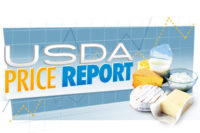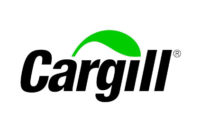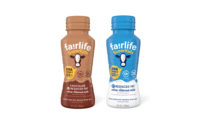Formulating for Children
Dairy foods designed for children’s nutritional needs and taste preferences are one of the greatest opportunities available.

According to the hot-off-the-press Packaged Facts report Kids’ Foods and Beverages in the U.S. 2011, one of the greatest opportunities in kids’ products is dairy foods designed for children’s nutritional needs and taste preferences, and marketed specifically to them as a kids’ food. The report estimates that retail sales of all types of foods for children hit the $10 billion mark at the end of 2010. This includes sales from all retail channels and reflects an increase of 25% from 2005.
“The kids’ food market gained attention after the turn-of-the-century, but never really had a fair chance to gain momentum as the recession entered the picture,” says Don Montuori, vice president-publishing, Marketresearch.com, Rockville, Md. “In 2009 and 2010, a number of marketers - in particular, dairy processors - turned up the heat, and started getting aggressive in this very important food marketing segment. As a result, Packaged Facts projects that the market will grow by 40% from 2010 to 2015.
“Dairy products comprised just a little over one-fifth of the kids’ food market in 2010, with beverages and frozen foods in first and second place, respectively. But really, the products representative of the first two categories are kid-friendly items such as juice boxes and French toast sticks,” says Montuori. “With the dairy category, the products are ‘really’ just for kids.”

Another example is YoBaby 3 in 1 Meals from Stonyfield Farm, Londonderry, N.H. YoBaby Meals’ are a unique combination of yogurt, fruit and vegetable purée, which helps moms give their preschoolers a trio of important food groups at every meal. Three varieties are available: Pear & Green Bean, Peach & Squash and Apple & Sweet Potato. The yogurts are also fortified with vitamin D and zinc.
Last year, CFM Beverages, Atlanta, introduced Mega Moo Vitamin Milk, a three-flavor line - chocolate, strawberry and vanilla - of fortified milks designed for kids’ nutritional needs. Shelf stable for up to 250 days, these value-added milks are loaded with a daily dose of recommended vitamins. They also contain less sugar than most other flavored milks, without the addition of anything artificial. Each 8-ounce carton provides only 135 calories, making it one of the most nutrient-dense milks in today’s marketplace.
In February, New Britain, Conn.-based Guida’s Milk introduced Healthy Moo for school milk programs. The initial flavors are chocolate, which contains 25% less sugar than the leading brand, and strawberry, which has 30% less sugar. Further, the new product uses 100% sugar instead of fructose sweetener. The company plans to expand to the retail market in the near future, hopefully just in time for summer vacation.
Numerous kids’ dairy foods debuted at Natural Products Expo West this March, including quite a few yogurts. And it’s no wonder, as market research firm NPD Group, Port Washington, N.Y., identified yogurt as the No. 1 food eaten as a snack by children 2- to 17-years old.
For example, The Hain Celestial Group, Melville, N.Y., showcased Earth’s Best Organic Baby Yogurt, which is scheduled to hit retailer’s refrigerators this summer. This new whole-milk yogurt is loaded with nine live and active cultures, including probiotics, and has been formulated for a baby’s nutritional needs, with each 4-ounce cup delivering 25% of the Daily Value for calcium, vitamin D and zinc, 2 grams fiber, 5 grams protein and other important vitamins and minerals. Made with no refined sugars, the yogurt gets its sweetness from the addition of organic fruit and fruit juices. It will come in four-packs of four different varieties: Apple, Banana Mango, Peach Pear and Vanilla Prune.
Right Track Global LLC, Irvine, Calif., debuted Dr. Sears Family Essentials Cool Fuel fortified, ready-to-drink shakes. Each 8-fluid-ounce serving contains 18 essential vitamins and minerals, 8 grams protein, 5 grams fiber and 100 milligrams of omega-3 fatty acids from fish oil. The drinks are sweetened with dried cane syrup and stevia. The protein comes from milk protein isolate, while the fiber is fructooligosaccharide. The gluten- and lactose-free shakes contain no artificial flavors, colors or sweeteners and 60% less sugar than competitive brands. Varieties are: Chocolate, Chocolate Banana and Vanilla.
Another company from Irvine - Orgain - manufacturers of a namesake organic ready-to-drink nutritional shake for adults, debuted a version for children appropriately called Orgain Healthy Kids. Based on the company’s proprietary organic protein blend consisting of whey protein concentrate and milk protein concentrate, the drinks also contain 10 different organic fruits (acai, apple, banana, blueberry and raspberry) and vegetables (beet, carrot, kale, spinach and tomato), as well as 25 vitamins and minerals. The gluten-free shake delivers 8 grams protein and 2 grams fiber per 8.25-fluid-ounce serving.
For healthy bone development, children need adequate protein intake, but also sufficient levels of bone-building minerals and vitamins, such as calcium, phosphorus, magnesium and vitamin D. Adequate levels of other essential micronutrients, such as zinc, vitamin C and vitamin K, are also needed by the growing child to assure optimal skeletal health. Other important nutrients for growth include folate, vitamin B12, as well as other B vitamins, which are needed for DNA replication and red blood cell formation and iron, which bolsters immunity and protects against developing anemia.
And probably the most buzz in recent years has been around omega-3 fatty acids, in particular docosahexaenoic acid (DHA) and eicosapentaenoic acid (EPA), which are both naturally found in certain marine oils. These fatty acids are important for visual and brain development in infants, and also play an important role in balancing the availability of anti-inflammatory signals produced by immune cells. Because children don’t tend to eat a lot of fatty fish, supplementation is important.
What to avoid? New product rollouts suggest that anything artificial, in particular colors, flavors and preservatives, is taboo. The negative press surrounding food dyes is definitely being considered by formulators, as well as the use of certain sweeteners. The good news is that dairy processors start with a base - milk - that comes loaded with important nutrients for kids.
In conclusion, Montuori says, “Dairy is such a natural for kids, which is likely why so many processors develop products specifically for this demographic.”
The products just reviewed and others will continue to drive category growth. “The compound annual growth rate for kids’ dairy products was 11.3% from 2005 to 2010, and we project it will be near this through 2015. Drinkable cultured dairy products will experience the greatest growth, with milk and yogurt both very strong categories,” says Montuori. “There’s a lot of opportunity within the cheese segment. Kids love cheese. So why not fortify string cheese with ingredients kids need more of, such as omega-3 fatty acids, and put a cartoon character on the package?”

According to the hot-off-the-press Packaged Facts report Kids’ Foods and Beverages in the U.S. 2011, one of the greatest opportunities in kids’ products is dairy foods designed for children’s nutritional needs and taste preferences, and marketed specifically to them as a kids’ food. The report estimates that retail sales of all types of foods for children hit the $10 billion mark at the end of 2010. This includes sales from all retail channels and reflects an increase of 25% from 2005.
“The kids’ food market gained attention after the turn-of-the-century, but never really had a fair chance to gain momentum as the recession entered the picture,” says Don Montuori, vice president-publishing, Marketresearch.com, Rockville, Md. “In 2009 and 2010, a number of marketers - in particular, dairy processors - turned up the heat, and started getting aggressive in this very important food marketing segment. As a result, Packaged Facts projects that the market will grow by 40% from 2010 to 2015.
“Dairy products comprised just a little over one-fifth of the kids’ food market in 2010, with beverages and frozen foods in first and second place, respectively. But really, the products representative of the first two categories are kid-friendly items such as juice boxes and French toast sticks,” says Montuori. “With the dairy category, the products are ‘really’ just for kids.”

Really, just for kids
Recently introduced innovative dairy foods for children include Chobani Champions, the first-ever Greek yogurt made for kids. Manufactured by Agro Farma Inc., New Berlin, N.Y., Chobani Champions come in two flavors: Honey-Nana and VeryBerry. Free of preservatives, artificial flavors and milk treated with synthetic growth hormones, each serving is an excellent source of vitamin D, a good source of bone-building calcium and comes loaded with protein. Sold in four-packs, Champions are packaged in 3.5-ounce cups to better accommodate a child-size appetite.Another example is YoBaby 3 in 1 Meals from Stonyfield Farm, Londonderry, N.H. YoBaby Meals’ are a unique combination of yogurt, fruit and vegetable purée, which helps moms give their preschoolers a trio of important food groups at every meal. Three varieties are available: Pear & Green Bean, Peach & Squash and Apple & Sweet Potato. The yogurts are also fortified with vitamin D and zinc.
Last year, CFM Beverages, Atlanta, introduced Mega Moo Vitamin Milk, a three-flavor line - chocolate, strawberry and vanilla - of fortified milks designed for kids’ nutritional needs. Shelf stable for up to 250 days, these value-added milks are loaded with a daily dose of recommended vitamins. They also contain less sugar than most other flavored milks, without the addition of anything artificial. Each 8-ounce carton provides only 135 calories, making it one of the most nutrient-dense milks in today’s marketplace.
In February, New Britain, Conn.-based Guida’s Milk introduced Healthy Moo for school milk programs. The initial flavors are chocolate, which contains 25% less sugar than the leading brand, and strawberry, which has 30% less sugar. Further, the new product uses 100% sugar instead of fructose sweetener. The company plans to expand to the retail market in the near future, hopefully just in time for summer vacation.
Numerous kids’ dairy foods debuted at Natural Products Expo West this March, including quite a few yogurts. And it’s no wonder, as market research firm NPD Group, Port Washington, N.Y., identified yogurt as the No. 1 food eaten as a snack by children 2- to 17-years old.
For example, The Hain Celestial Group, Melville, N.Y., showcased Earth’s Best Organic Baby Yogurt, which is scheduled to hit retailer’s refrigerators this summer. This new whole-milk yogurt is loaded with nine live and active cultures, including probiotics, and has been formulated for a baby’s nutritional needs, with each 4-ounce cup delivering 25% of the Daily Value for calcium, vitamin D and zinc, 2 grams fiber, 5 grams protein and other important vitamins and minerals. Made with no refined sugars, the yogurt gets its sweetness from the addition of organic fruit and fruit juices. It will come in four-packs of four different varieties: Apple, Banana Mango, Peach Pear and Vanilla Prune.
Right Track Global LLC, Irvine, Calif., debuted Dr. Sears Family Essentials Cool Fuel fortified, ready-to-drink shakes. Each 8-fluid-ounce serving contains 18 essential vitamins and minerals, 8 grams protein, 5 grams fiber and 100 milligrams of omega-3 fatty acids from fish oil. The drinks are sweetened with dried cane syrup and stevia. The protein comes from milk protein isolate, while the fiber is fructooligosaccharide. The gluten- and lactose-free shakes contain no artificial flavors, colors or sweeteners and 60% less sugar than competitive brands. Varieties are: Chocolate, Chocolate Banana and Vanilla.
Another company from Irvine - Orgain - manufacturers of a namesake organic ready-to-drink nutritional shake for adults, debuted a version for children appropriately called Orgain Healthy Kids. Based on the company’s proprietary organic protein blend consisting of whey protein concentrate and milk protein concentrate, the drinks also contain 10 different organic fruits (acai, apple, banana, blueberry and raspberry) and vegetables (beet, carrot, kale, spinach and tomato), as well as 25 vitamins and minerals. The gluten-free shake delivers 8 grams protein and 2 grams fiber per 8.25-fluid-ounce serving.
Nutrients kids need
So what nutrients are the most appropriate for fortification of kids’ dairy foods? The answer is really almost everything, as many children have small appetites when it comes to “real” foods and they would rather fill up on nutrient-void sweets and treats. Fortification typically addresses healthy growth and development, as well as protecting against disease.For healthy bone development, children need adequate protein intake, but also sufficient levels of bone-building minerals and vitamins, such as calcium, phosphorus, magnesium and vitamin D. Adequate levels of other essential micronutrients, such as zinc, vitamin C and vitamin K, are also needed by the growing child to assure optimal skeletal health. Other important nutrients for growth include folate, vitamin B12, as well as other B vitamins, which are needed for DNA replication and red blood cell formation and iron, which bolsters immunity and protects against developing anemia.
And probably the most buzz in recent years has been around omega-3 fatty acids, in particular docosahexaenoic acid (DHA) and eicosapentaenoic acid (EPA), which are both naturally found in certain marine oils. These fatty acids are important for visual and brain development in infants, and also play an important role in balancing the availability of anti-inflammatory signals produced by immune cells. Because children don’t tend to eat a lot of fatty fish, supplementation is important.
What to avoid? New product rollouts suggest that anything artificial, in particular colors, flavors and preservatives, is taboo. The negative press surrounding food dyes is definitely being considered by formulators, as well as the use of certain sweeteners. The good news is that dairy processors start with a base - milk - that comes loaded with important nutrients for kids.
In conclusion, Montuori says, “Dairy is such a natural for kids, which is likely why so many processors develop products specifically for this demographic.”
The products just reviewed and others will continue to drive category growth. “The compound annual growth rate for kids’ dairy products was 11.3% from 2005 to 2010, and we project it will be near this through 2015. Drinkable cultured dairy products will experience the greatest growth, with milk and yogurt both very strong categories,” says Montuori. “There’s a lot of opportunity within the cheese segment. Kids love cheese. So why not fortify string cheese with ingredients kids need more of, such as omega-3 fatty acids, and put a cartoon character on the package?”
Looking for a reprint of this article?
From high-res PDFs to custom plaques, order your copy today!






